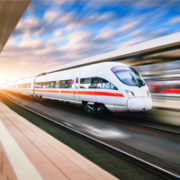Archive | Urban development RSS feed for this section
Transport, Uncategorized, Urban development
 Urban development
Urban development
 Governance and public sector management, Urban development
Governance and public sector management, Urban development
 Governance and public sector management, Health, Urban development, Water
Governance and public sector management, Health, Urban development, Water
 Governance and public sector management, Social development and protection, Urban development
Governance and public sector management, Social development and protection, Urban development
 Governance and public sector management, Urban development
Governance and public sector management, Urban development
 Economics, Environment, Information and Communications Technology, Infrastructure, Social development and protection, Urban development
Economics, Environment, Information and Communications Technology, Infrastructure, Social development and protection, Urban development
 Capacity development, Health, Social development and protection, Urban development, Water
Capacity development, Health, Social development and protection, Urban development, Water
 Urban development
Urban development
 Economics, Transport, Urban development
Economics, Transport, Urban development

Calling for Quality Infrastructure—Why and How?

Quality infrastructure, backed by strategic planning and innovative financing, can transform developing countries by driving sustainable growth, resilience, and economic potential while addressing global challenges like climate change and funding gaps.
Kashima City’s Great Transformation: Where Industry Meets Community

Kashima’s City's industrial transformation demonstrates the importance of government commitment, collaboration, and communication in driving regional development.
Rethinking cities for resilience and growth in the post-COVID-19 world

In an urban environment, resilience helps to maintain continuity amid shocks and stresses while progressing toward sustainability.
Sanitation tours demonstrate successful sanitation in South Asia

Safe sanitation for all is essential for improving public health, providing a clean environment, and breaking cycles of disease.
Sustainable urban development in India: Emerging issues and the way forward

The majority of city residents worldwide live with high levels of air pollution and many still live in slum conditions with limited access to sanitation.
Land value capture mechanism provides opportunity for sustainable urbanization in developing Asia

Land value capture methods can fill budget gaps in infrastructure projects while promoting sustainable transit-oriented development.
Levelling up innovation in Asia

Innovation is playing a vital role in the economic, social, and environmental progress of Asia and the Pacific and has been an important factor in the region's rapid and successful transformation. However, many countries in the region lag behind, innovating at a fraction of the pace as countries in similar or even lower income groups.
Making citywide inclusive sanitation a reality through capacity development
By Abishek Narayan, Christoph Luthi, Ma. Laarni Revilla, Deepanshu Agarwal and KE Seetha Ram. Posted January 18, 2021

Over a billion people across Asia and the Pacific still lack access to basic sanitation services (JMP 2019). Most low- and middle-income countries in Central Asia, South Asia, and East Asia still do not have safely managed sanitation services. Further, only a fifth of the countries practicing open defecation are on track to eliminate this practice around the world. Clearly, business as usual in the sanitation sector has not solved this challenge in the last several decades.
World competition among cities: City trends and the framing of a livable city

Over the next 3 decades, about 70% of the world’s population is expected to be living in urban areas. Within the next decade, by 2030, the world is projected to have over 40 megacities with more than 10 million inhabitants. Such population flows into cities will disrupt the functioning of cities and lead to urban issues, such as transportation congestion, air pollution, and housing shortages.
Measuring the economic and social impacts of high-speed rail

The scale of investments in high-speed rail (HSR) raises questions about the most appropriate methods of appraisal. Increasingly the reliance on conventional cost–benefit analysis, based essentially on the direct benefits to users and the direct costs to operators, has been questioned.


Search
Subscribe / Connect to Asia Pathways
Subjects
- Agriculture and natural resources
- Blog
- Capacity development
- Climate change
- Economics
- Education
- Energy
- Environment
- Finance sector development
- Gender
- Governance and public sector management
- Health
- Industry and trade
- Information and Communications Technology
- Infrastructure
- Miscellaneous
- Population
- Poverty
- Private sector development
- Regional cooperation and integration
- Sanitation
- Social development and protection
- Transport
- Uncategorized
- Urban development
- Video Blog
- Water
Recent Posts
- Navigating Linear Transport Infrastructure Through Conservation Landscapes
- How Are Technology Trends Shaping the Future of Insurance?
- Securing Asia’s Future Through Soil Health: Why It Matters and What Must Be Done
- Silent Struggles: Advancing Women’s Mobility with Public Transportation in Asia
- Mind Your Neighbors: Measuring Shrimp Farm Spillovers




Recent Comments